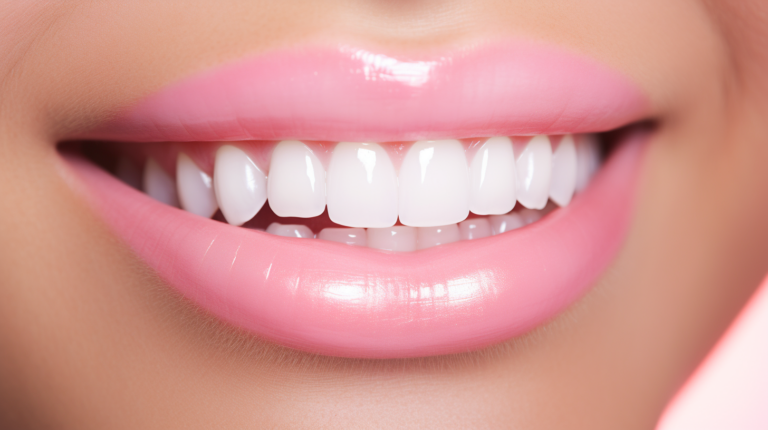Teeth Whitening - A Bright Smile Guide - Whitening Toothpaste, Strips, Pens & More
The Journey to a Brighter Smile: Exploring Various Teeth Whitening Methods

Teeth whitening, efficient and cost effective methods (Image credit: Mia’s Best)
- Whiter Teeth Guide
| Section | Key Points |
|---|---|
| Introduction | The importance of a bright, white smile for personal and social benefits. |
| Understanding Teeth Whitening | Explanation of what teeth whitening is and the main causes of tooth discoloration. |
| Different Methods of Teeth Whitening | Overview of over-the-counter products, professional methods, and natural methods of teeth whitening. Detailed explanation of each method and a comparative table on cost, effectiveness, and time required. |
| The Pros and Cons of Teeth Whitening | Outlines the advantages of teeth whitening, such as improved appearance and self-confidence, along with potential risks such as tooth sensitivity and gum irritation. |
| Tips for Maintaining White Teeth | Suggestions for maintaining the whiteness of teeth after whitening, including regular oral hygiene, limiting intake of staining foods and beverages, and regular dental check-ups. |
| Conclusion | Recap of the blog post and encouragement for readers to consider the teeth whitening method that fits their needs. |
| FAQ | Answers to five common questions related to teeth whitening including frequency, precautions, potential damage, pain, and suitability. |
- Pros
- Improved Appearance: Teeth whitening can significantly enhance your smile by removing stains and brightening the color of your teeth.
- Increased Confidence: A brighter smile often leads to a boost in self-esteem, making you feel more confident in social and professional situations.
- Motivation for Better Oral Health: After teeth whitening, many people feel motivated to maintain their bright smile by improving their oral hygiene habits.
- Cons
- Tooth Sensitivity: One of the most common side effects of teeth whitening is increased tooth sensitivity, particularly to hot and cold temperatures.
- Gum Irritation: The bleaching agents used in many whitening methods can sometimes cause gum irritation, although this is usually temporary.
- Not Effective for All Types of Discoloration: Teeth whitening treatments are more effective on yellow tones and less effective on brown or gray toned teeth. They may not work on all types of discoloration, such as those caused by certain medications or injury.
- RECOMMENDED VIDEO FOR YOU

Teeth whitening smile (Image credit: Mia’s Best)
Introduction
Hello, smile enthusiasts! Bright and white teeth have always been a symbol of health and attractiveness. But what exactly makes a smile so important? Well, a brilliant smile not only boosts our self-confidence but also leaves a lasting impression on those around us. When we flash our pearly whites, we are seen as friendly, trustworthy, and approachable. Hence, maintaining a radiant smile becomes a priority for many.

Teeth whitening (Image credit: Mia’s Best)
Advertisement

Understanding Teeth Whitening
Teeth whitening is a simple process that lightens the color of your teeth and helps remove stains and discoloration. While it’s not a one-time solution, it can significantly improve the brightness of your smile when done periodically.
So, How Do Teeth Get Discolored or Stained?
There are several factors that can contribute to teeth discoloration:
- Food and Drink: Drinks like coffee, tea, and red wine are known culprits of staining teeth.
- Tobacco Use: Tar and nicotine found in tobacco can create stubborn stains.
- Age: As we get older, the outer enamel gets thinner, revealing the naturally yellowish color of dentin.
- Trauma: Injuries to the mouth can cause teeth to change color in response to damage.
- Medication: Certain drugs, like high blood pressure medications, can darken teeth.

Medication could affect your teeth color (Image credit: Mia’s Best)
Understanding the cause of tooth discoloration can help in choosing the right teeth whitening method. In the next section, we’ll explore different ways to brighten your smile.
Stay tuned, and remember – a brighter smile could be just around the corner!
Different Methods of Teeth Whitening
If you’re looking to enhance your smile, there are several methods to consider. These range from over-the-counter products, professional dental services, to natural home remedies. Let’s dive into each of these:
Over-the-counter Products:
Whitening Toothpaste: These are slightly more abrasive than regular toothpaste and work to remove surface stains over time. They’re the easiest to incorporate into your daily routine.
Whitening Strips: Thin, flexible strips coated with a whitening gel. They are applied to the teeth for a set amount of time each day.
Whitening Gels and Trays: Gels are applied to the teeth using mouth trays. They provide more coverage than strips and usually offer more noticeable results.
Teeth Whitening Pens: These portable pens are filled with whitening gel and are brushed directly onto the teeth. Perfect for touch-ups and on-the-go whitening.

Woman brushing teeths (Image credit: Mia’s Best)
Professional Methods:
In-Office Bleaching: This is a fast and effective method done by a dental professional, often using a strong bleaching agent and sometimes light or heat.
Laser Whitening: A professional teeth whitening method where a bleaching product is painted onto your teeth and then a light or laser is shone on them to activate the whitening.
Natural Methods:
Oil Pulling: An ancient practice of swishing oil (like coconut oil) in your mouth for several minutes. It’s believed to pull toxins from the mouth and whiten teeth.
Brushing with Baking Soda: A natural whitener that you can incorporate into your brushing routine. However, it should be used sparingly as it can be abrasive.
Teeth Whitening Methods Comparison:
Let’s compare these methods in the following table:
| Method | Approximate Cost | Effectiveness | Time Required |
|---|---|---|---|
| Whitening Toothpaste | $ | Low | Continuous use |
| Whitening Strips | $$ | Medium | 2 weeks |
| Whitening Gels and Trays | $$ | Medium-High | Varies |
| Teeth Whitening Pens | $$ | Medium | Varies |
| In-Office Bleaching | $$$ | High | 1-2 hours |
| Laser Whitening | $$$$ | High | 1-2 hours |
| Oil Pulling | $ | Low-Medium | Continuous use |
| Brushing with Baking Soda | $ | Low | Continuous use |

This flowchart represents the different teeth whitening methods mentioned in the article. Each method is linked to its cost, effectiveness, and the time required for the treatment. The cost is represented in terms of $ symbols, with more $ symbols indicating a higher cost. The effectiveness is categorized as low, medium, medium-high, or high. The time required for each method varies and is indicated for each method. (Image credit: Mia’s Best)
The Pros and Cons of Teeth Whitening
Just like any other procedure, teeth whitening comes with its benefits and potential drawbacks.
Advantages of Teeth Whitening:
- Enhanced Appearance: The most obvious benefit is a brighter, more appealing smile.
- Boosted Self-confidence: With whiter teeth, you may feel more confident in social or professional settings.
- Improved Oral Health: While teeth whitening is mainly cosmetic, the process can lead to better oral hygiene habits.

White teeth (Image credit: Mia’s Best)
Potential Risks or Downsides:
- Tooth Sensitivity: Some people may experience increased tooth sensitivity after teeth whitening procedures, especially with professional methods.
- Gum Irritation: Whitening agents can sometimes irritate the gums, although this is usually temporary.
- Inconsistent Results: Whitening treatments might not work on all types of discoloration, such as gray tones or discoloration caused by medication or injury.
While there are potential risks, they can often be minimized by following product directions, consulting with a dental professional, and maintaining good oral health.
In the next section, we’ll explore how to maintain your brighter, whiter smile.
Tips for Maintaining White Teeth
Once you’ve achieved your desired level of brightness, maintaining your pearly whites is equally important. Here are some tips:
- Regular Brushing and Flossing: Brush at least twice a day and floss regularly to prevent plaque buildup.
- Limit Intake of Staining Foods and Beverages: Try to reduce the consumption of beverages and foods that stain your teeth. These include coffee, tea, red wine, and certain fruits like blueberries.
- Regular Dental Check-ups: Regular visits to your dentist for cleaning can help maintain your teeth’s whiteness.
- Proper Hydration: Drinking plenty of water throughout the day can help wash away stain-causing substances.
Conclusion
In summary, teeth whitening is a fantastic way to enhance your smile and boost your confidence. Whether you opt for over-the-counter products like whitening toothpaste, strips, gels, trays, or teeth whitening pens, professional methods such as in-office bleaching or laser whitening, or even natural methods like oil pulling or brushing with baking soda, you have plenty of options to consider.
Each method has its own advantages, potential downsides, and level of effectiveness. Consider what fits best within your lifestyle, budget, and desired results. Remember, a bright smile is just a step away!
How long does teeth whitening last and does it really work?
- How long does teeth whitening last?
The longevity of teeth whitening varies depending on the method used and individual factors like oral hygiene habits and diet. Generally, results from professional methods can last up to three years, whereas over-the-counter products usually last for several months. Regular touch-ups can help extend the whitening effect. - What at-home teeth whiteners really work?
Several at-home teeth whiteners are effective to a degree, including whitening toothpaste, strips, gels and trays, and teeth whitening pens. While these methods may not be as potent as professional treatments, they can be a cost-effective way to maintain or slightly improve the whiteness of your teeth.
FAQ
The frequency depends on the method of teeth whitening you’re using. For most over-the-counter products, you can use them until you achieve your desired whiteness, usually over a few weeks. For professional treatments, it’s best to follow your dentist’s advice, but these are typically done once every few years. Remember, excessive whitening can lead to tooth sensitivity and gum irritation.
Yes, it’s generally recommended to avoid foods and drinks that can stain your teeth, especially in the first 48 hours after whitening when your teeth are most susceptible to staining. These include coffee, tea, red wine, soda, and dark-colored fruits and vegetables.
When used correctly, teeth whitening products are safe and should not damage your teeth. However, overuse or misuse can lead to tooth sensitivity and gum irritation. Always follow the instructions and consult with a dental professional if you have any concerns.
Teeth whitening should not be painful. However, some people may experience temporary tooth sensitivity or gum discomfort during or after treatment. If you experience severe or prolonged pain, discontinue use and consult with a dentist.
While most people can safely whiten their teeth, there are some exceptions. Pregnant or nursing women, children under the age of 16, and people with gum disease, worn enamel, cavities, or very sensitive teeth should consult with a dentist before using any whitening products.